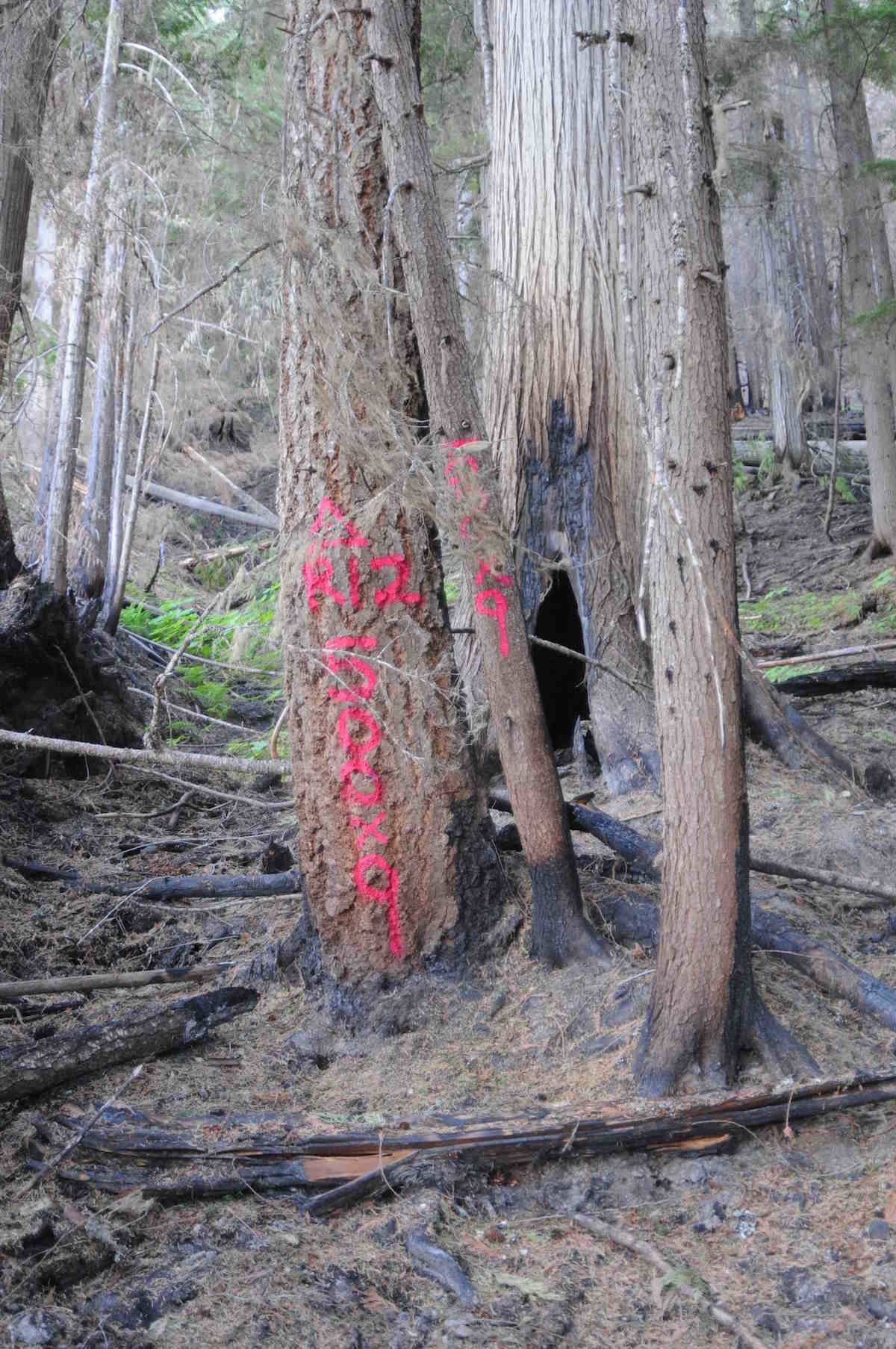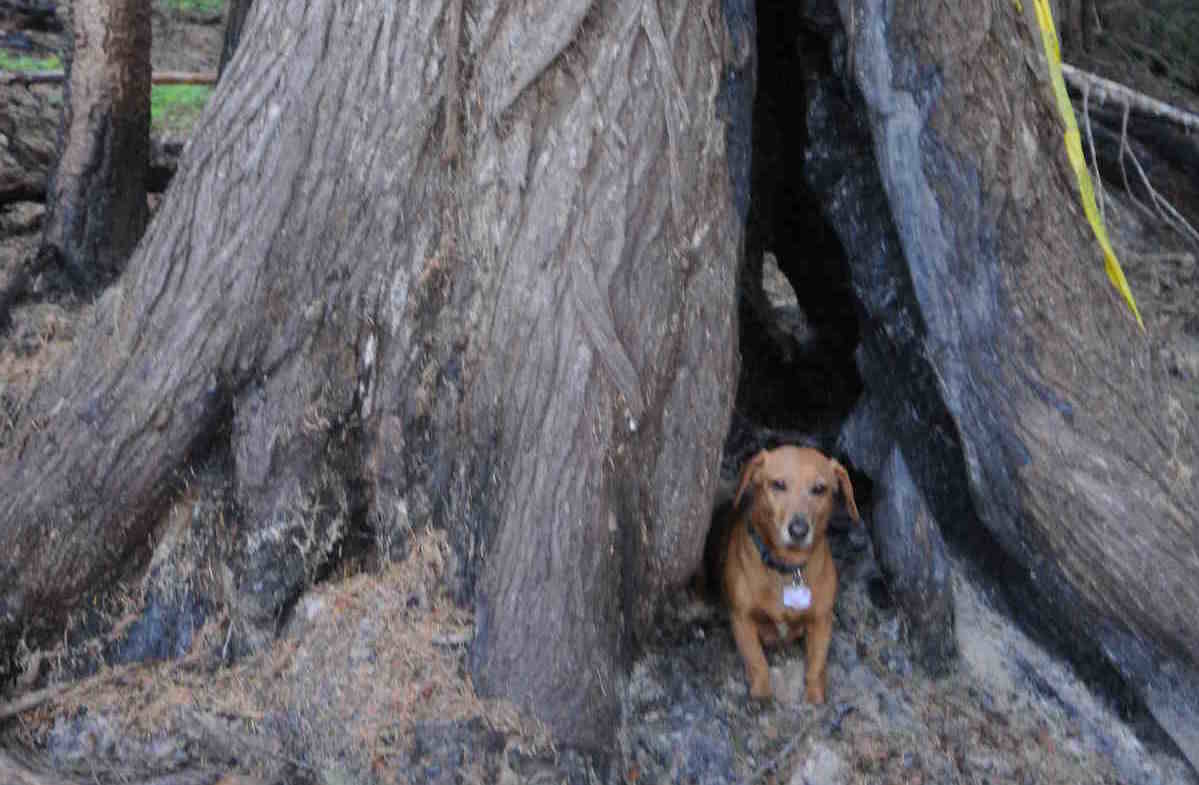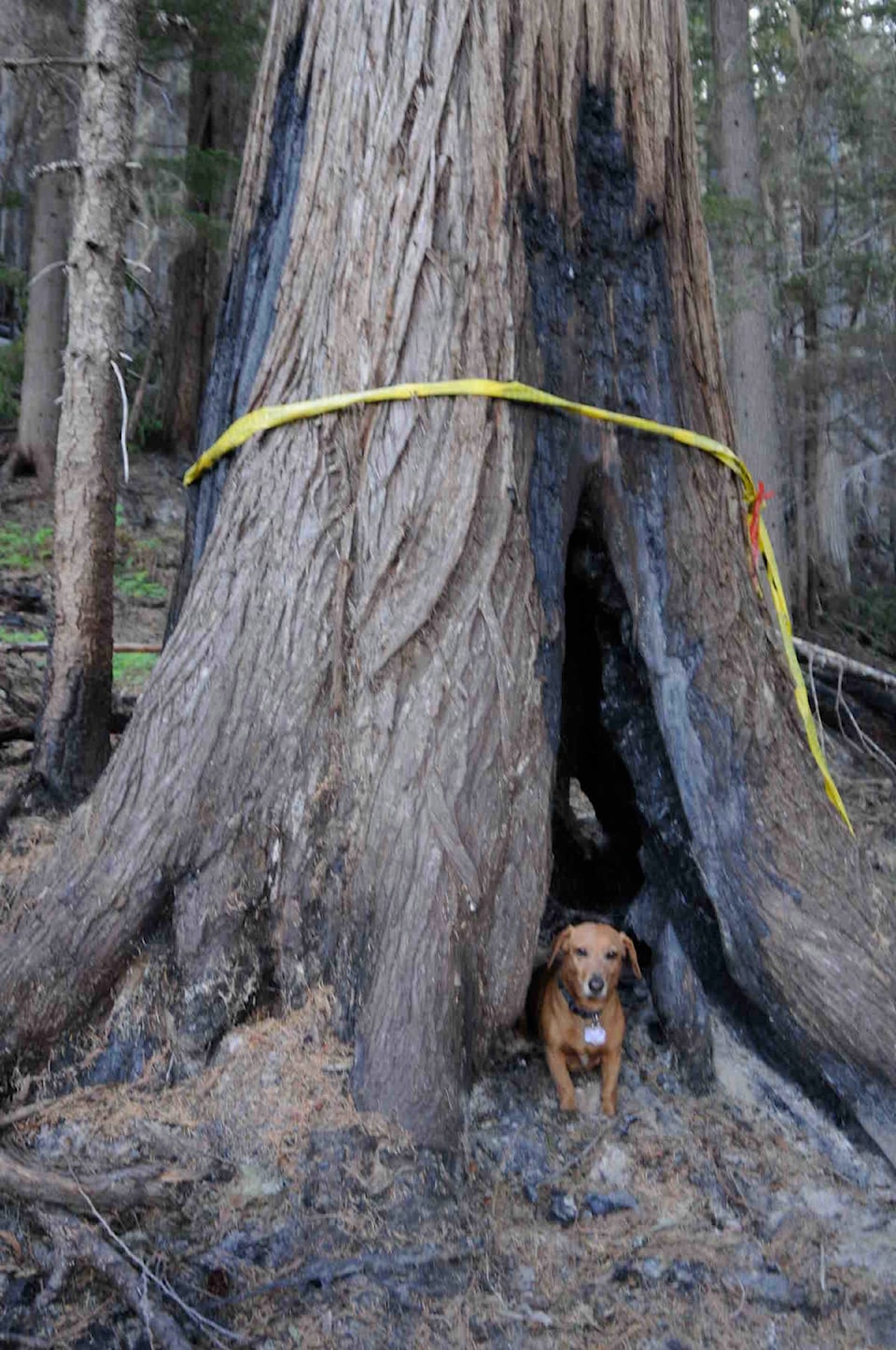A Slocan Valley bear biologist wants a logging company to spare a tree that he says shows all the signs of being a bear den. He wants them to leave a strip in their cutblock and move the planned location of a road.
But Wayne McCrory says the company, Yucwmenlúcwu (Caretakers of the Land), owned by the Splatsin First Nation located near Enderby, has refused to move the road.
The cutblock is located in the Valhalla Range just north of Valhalla Park and Slocan Lake.
“I was hoping that they would be more amenable to this,” McCrory told the Star, “especially when they [initially] phoned me asking for input.”
He said the company told him they would try to save the den tree but might have to “stub” it to make it safe by WorkSafe BC rules. Then they would cap it so a bear might be able to use it later.
McCrory said it may be only one tree, but it’s symbolic. Den trees only exist in old growth and he estimates that 80 per cent of the old growth forest in the Slocan Valley has been logged.
“This is symbolic of what is wrong with our resource management policies today when you don’t protect high biodiversity areas like this,” he said. “Whether you stand up for one tree or many … or you stand up for one grizzly that was wrongly killed or the whole population, it is the same principle.”
Yucwmenlúcwu has not returned the Star’s calls or emails requesting comment.
McCrory was instrumental in pushing for the 2016 Great Bear Rainforest legislation that includes a provision that bear dens should be surrounded by a 30-metre buffer and no road construction.
What he’s recommending here is “leave a strip 40 metres wide and 200 meters long, not a very big area. It mostly means moving the road. Having built lots of mining company roads, I don’t see the problem. It is not like we are asking them not to log or not to salvage, it is just moving things a bit to accommodate.”
He said he’s been tracking and attempting to protect grizzly bear dens and old-growth black bear dens for the past 40 years and is now trying to get legislation that would apply outside of protected areas.
“What I am talking about is not an economic threat to logging companies per se, it is just encompassing new knowledge and new information into more ecosystem-friendly logging, as has happened on the coast.”





